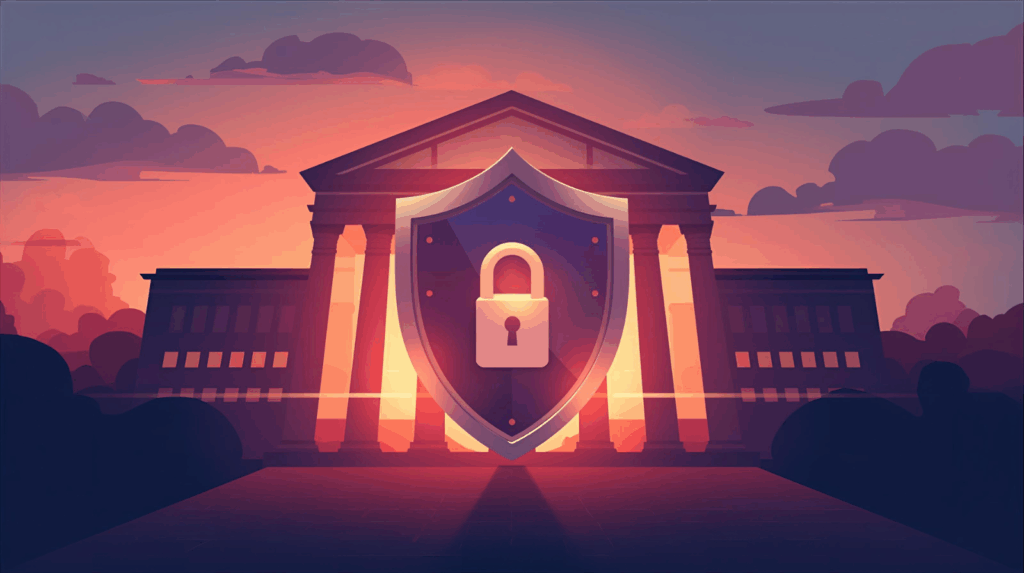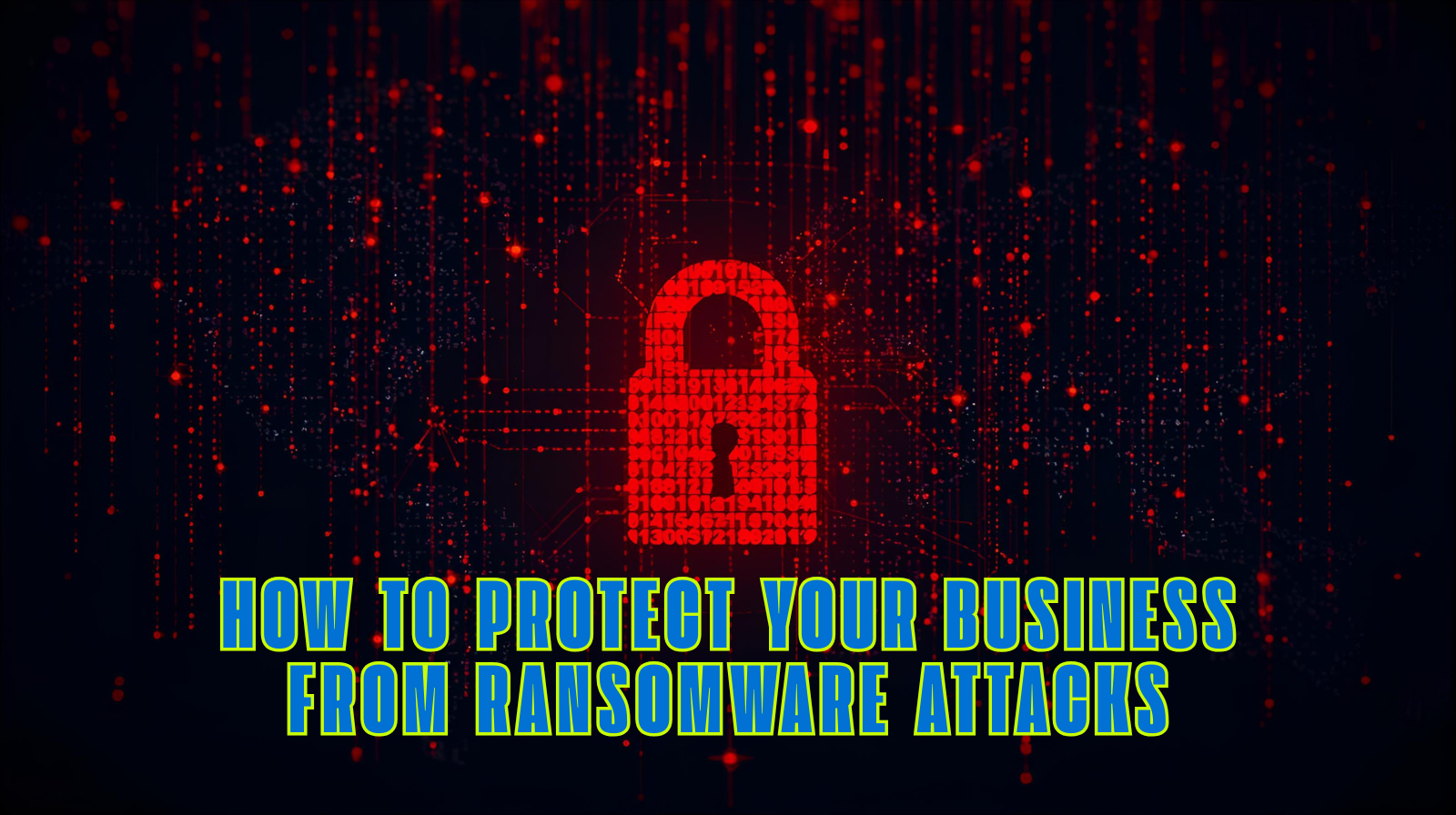Ransomware is no longer a distant threat whispered about in IT security circles. It’s a clear and present danger to businesses of every size, in every industry, in every corner of the globe. It’s a digital extortion racket that has evolved into a multi-billion dollar criminal enterprise, and your company is a potential target.
The scenario is every business leader’s nightmare: you arrive at the office to find that all your critical files—customer databases, financial records, intellectual property—are encrypted and inaccessible. A message flashes on every screen: “Your data is locked. Pay a ransom in Bitcoin to get the decryption key.”
The clock is ticking. Operations are frozen. Your reputation is on the line. The financial demands are staggering, and the decision you face is agonizing: do you pay the criminals and hope they keep their word, or do you refuse and face potentially catastrophic data loss and downtime?
The good news is that this nightmare is largely preventable. Ransomware isn’t an unstoppable force of nature; it’s a threat that exploits specific weaknesses. By understanding those weaknesses and building a multi-layered, proactive defense, you can transform your business from a soft target into a hardened fortress.
This ultimate guide will take you beyond the basic advice. We will delve deep into the mindset of the attacker, the anatomy of an attack, and build a comprehensive, actionable strategy to protect your business from ransomware.
Part 1: Understanding the Enemy – What is Ransomware and Why Are You a Target?
Before we can build defenses, we must understand what we’re defending against.
What is Ransomware?
Ransomware is a type of malicious software (malware) that blocks access to a computer system or data until a sum of money is paid. Modern ransomware typically does this by encrypting files with an unbreakable algorithm, rendering them useless without the unique decryption key held by the attacker.
The Evolution of Threats: Double and Triple Extortion
The classic ransomware model was simple: pay to decrypt your files. Today, attackers have refined their tactics for maximum profit and pressure:
Double Extortion: Before encrypting your data, the attackers exfiltrate (steal) it. Their threat becomes: “Pay us to get your files back, and pay us again, or we will leak your sensitive data (customer information, trade secrets, financial reports) publicly.” This removes the option of simply restoring from backup and ignoring the ransom.
Triple Extortion: Taking it a step further, attackers may then use the stolen data to extort your customers and partners directly. They might send emails to your clients saying, “We have your data from Company X. Pay us, or we will release it.” This multiplies the damage exponentially, destroying customer trust and inviting lawsuits.
The Ransomware-as-a-Service (RaaS) Model
You are not always up against a lone hacker genius. The rise of Ransomware-as-a-Service has democratized cybercrime. Skilled developers create user-friendly ransomware kits and lease them to less-technical “affiliates” in exchange for a cut of the profits. This means there are more attackers than ever, with access to sophisticated tools, making no business too small to target.
Why YOU? The Business Case for Attackers
Many small and medium-sized businesses (SMBs) operate under the false assumption that they are “too small” to be targeted. This is a dangerous fallacy. Attackers often view SMBs as perfect targets because they:
Hold valuable data (customer records, payment information).
Have less sophisticated security budgets and defenses compared to large enterprises.
Are more likely to pay a ransom quickly to resume operations, as downtime can be fatal to an SMB.
Can be used as a “stepping stone” to attack larger partners in their supply chain.
Part 2: The Anatomy of a Ransomware Attack – How the Breach Happens
Ransomware doesn’t magically appear on your network. It follows a kill chain—a series of steps an attacker takes to achieve their goal. Understanding this chain is key to breaking it.

Step 1: Initial Infection Vector – How They Get In
Attackers have a toolkit of methods to gain that initial foothold:
Phishing Emails: The #1 delivery method. A carefully crafted email tricks an employee into clicking a malicious link or opening a booby-trapped attachment. These emails are often highly targeted (spear phishing), impersonating a trusted sender like a vendor, bank, or even the CEO.
Compromised Websites (Drive-by Downloads): An employee visits a legitimate website that has been compromised. In the background, malicious code scans the visitor’s browser and system for vulnerabilities and automatically downloads ransomware without any user interaction.
Remote Desktop Protocol (RDP) Attacks: If your RDP ports are exposed to the internet, attackers use automated tools to perform “brute-force” attacks, guessing usernames and passwords until they find a weak one and gain direct access to a machine.
Software Vulnerabilities: Unpatched software—operating systems, applications, plugins—contains known security holes. Attackers scan the internet for systems with these vulnerabilities and exploit them to deploy their payload.
Supply Chain Attacks: Attackers compromise a trusted third-party software vendor or service provider. When you update your software or use the service, you inadvertently install the malware yourself. The Kaseya and SolarWinds attacks are infamous examples.
Malicious USB Drives / Physical Access: An attacker or a careless employee plugs in an infected USB drive, introducing the malware directly into the network.
Step 2: Execution and Persistence – Digging In
Once the initial malware is inside, it will:
Execute its payload and establish a connection to the attacker’s command-and-control (C&C) server.
Try to disable or bypass your security software (antivirus, endpoint protection).
Create new user accounts or scheduled tasks to ensure it can maintain access even if the system is rebooted.
Step 3: Lateral Movement – Spreading Through the Network
The initial infected machine is just the beachhead. The attacker’s goal is to spread to other, more valuable systems. They use tools and techniques to:
Harvest credentials stored on the machine.
Exploit network privileges to move from one computer to another.
Target domain controllers, file servers, and database servers—the crown jewels of your network.
Step 4: Data Exfiltration – The Silent Theft (for Double Extortion)
Before triggering the encryption, the attackers will spend days or weeks quietly searching for and copying your most sensitive data to their own servers. This step is often the most difficult to detect.
Step 5: Encryption and Ransom Demand – The Final Blow
Once the attackers have a firm grip on your network and have stolen your data, they deploy the ransomware binary to encrypt files on every machine they can access. The encryption is rapid and thorough. Then, the ransom note appears, with instructions on how to pay, often with a threatening countdown timer.
Part 3: Building Your Fortress – A Multi-Layered Defense Strategy
Preventing a ransomware attack requires a “defense-in-depth” approach. There is no single silver bullet. You must build multiple layers of security so that if one fails, another stands ready to block the attack.
Layer 1: The Human Firewall – Your Employees
Your employees are your first and most critical line of defense. A well-trained user is the most effective security control you can have.
Continuous Security Awareness Training: Move beyond annual, boring compliance videos. Use engaging, frequent, and simulated training.
Phishing Simulation Tests: Regularly send fake phishing emails to your staff. Use the results not to punish, but to educate. Who clicked? Why did it look convincing? Use this data to provide targeted training.
Teach Critical Thinking: Train employees to scrutinize every email. Check the sender’s address carefully (not just the display name). Hover over links to see the true destination URL. Be wary of urgent language or unusual requests, especially those involving money or credentials.
Create a “Culture of Security”: Empower employees to report anything suspicious without fear of reprimand. Make “See Something, Say Something” the company motto for cybersecurity.
Layer 2: Endpoint Protection – Securing the Devices
Endpoints (laptops, desktops, servers) are the primary targets.
Next-Generation Antivirus (NGAV) / Endpoint Detection and Response (EDR): Ditch traditional, signature-based antivirus. NGAV uses behavioral analysis and AI to detect and block unknown threats. EDR goes further, providing continuous monitoring, threat hunting, and the ability to investigate and respond to incidents after they occur.
Application Whitelisting: Instead of trying to block all “bad” software, this approach only allows pre-approved “good” applications to run. This is highly effective at preventing unknown executables (like ransomware) from ever launching.
Hardened Configuration: Disable macros in Microsoft Office files from the internet. Restrict PowerShell scripting to only authorized users and enable extensive logging of its activities. Uninstall unnecessary software and browser plugins to reduce the attack surface.
Layer 3: Network Security – Guarding the Gates
Your network is the highway along which ransomware travels.
Next-Generation Firewall (NGFW): A NGFW does more than just block ports. It can inspect the content of web traffic, filter out malicious websites, and detect and block intrusion attempts.
Network Segmentation: This is arguably one of the most important defenses. Do not have one flat network where the reception computer can talk directly to the accounting server. Segment your network into zones (e.g., Guest Wi-Fi, Corporate User LAN, Server VLAN). If ransomware infects one segment, firewalls between segments can prevent it from spreading to your most critical assets.
Email Security Gateways: Use a advanced email filtering solution that can detect and quarantine phishing emails, malicious attachments, and suspicious links before they reach a user’s inbox.
Web Filtering: Restrict the websites users can visit, blocking known malicious categories (malware, phishing, suspicious) to prevent drive-by downloads.
VPN & RDP Security: If you use RDP, never expose it directly to the public internet. Place it behind a VPN (Virtual Private Network) that requires multi-factor authentication (MFA). Ensure your VPN software is always patched.
Layer 4: Access Control – The Principle of Least Privilege
Limit what users can do, both on their local machine and across the network.
Standard User Accounts: No one should be using an administrator account for daily tasks like checking email and browsing the web. Users should operate with standard accounts that cannot install software or change critical system settings.
Privileged Access Management (PAM): Strictly control and monitor the use of administrative accounts. Use a “just-in-time” model where elevated privileges are granted for a specific task and then revoked.
Multi-Factor Authentication (MFA): Enable MFA everywhere it is supported. This is a non-negotiable security control. Even if an attacker steals a password, they cannot log in without the second factor (e.g., a code from an app on your phone). This single step can prevent over 99% of account compromise attacks.
Disable Legacy Protocols: Disable old, insecure protocols like SMBv1 and LLMNR, which are often exploited by ransomware for lateral movement.
Layer 5: Vulnerability Management – Patching the Holes
Unpatched software is an open door for attackers.
Establish a Formal Patching Policy: Define timelines for deploying patches based on severity. Critical patches should be deployed within days, if not hours.
Automate Patch Deployment: Use a centralized patch management system to automate the deployment of operating system and application patches across your entire environment.
Conduct Regular Vulnerability Scans: Use automated tools to scan your network weekly or monthly to identify unpatched systems, misconfigurations, and other security weaknesses. Prioritize remediation based on risk.
Layer 6: The Last Line of Defense – Robust, Immutable Backups
If all other defenses fail, your backups are your only way to recover without paying the ransom. However, attackers know this and will specifically target your backups. Therefore, your backup strategy must be ransomware-resilient.
The 3-2-1 Backup Rule:
3 copies of your data.
2 different media types (e.g., disk and cloud).
1 copy kept offline or immutable.
Immutable Backups: This is the gold standard. Use a backup solution that offers immutable or “write-once, read-many” (WORM) storage. Once a backup is written, it cannot be altered or deleted for a specified retention period, even by a rogue administrator or an attacker with admin credentials.
Air-Gapped Backups: For the most critical data, maintain a physically disconnected backup (e.g., a tape drive that is only connected during the backup window). This makes it impossible for network-based ransomware to touch it.
Test, Test, Test! Your backups are useless if they don’t work. Perform regular, scheduled recovery drills. Can you restore a file? A folder? An entire server? How long does it take? Document the process. A backup is not a backup until it has been successfully restored.
Part 4: Proactive Measures – Threat Hunting and Incident Response
A truly resilient organization doesn’t just wait to be attacked; it actively hunts for threats and is prepared to respond.
Threat Hunting: Proactively search through your network logs and EDR data for signs of malicious activity that may have bypassed your automated defenses. Look for anomalies, like unusual login times, strange network connections, or spikes in data egress.
Develop a Formal Incident Response (IR) Plan: Do not wait for an attack to figure out what to do. Your IR plan should be a documented, practiced playbook that answers:
Who is on the Incident Response Team? (IT, Management, Legal, PR, external forensics)
What are the steps to contain the outbreak? (Isolate infected machines, disconnect from the internet?)
How do we communicate? (Internally, to customers, to law enforcement, to the public?)
What are our decision criteria for paying/not paying the ransom? (This is a business, legal, and ethical decision that should not be made in a panic.)
How do we eradicate the threat and recover systems?
Conduct Tabletop Exercises: Gather your IR team and key executives to walk through a simulated ransomware scenario. “It’s 9 AM on a Monday. All our engineering files are encrypted. What do we do first?” These exercises reveal gaps in your plan and ensure everyone knows their role.
Part 5: The Ultimate Question – To Pay or Not to Pay?
If you are hit, you will face immense pressure to pay. The FBI and cybersecurity experts universally advise against paying the ransom. Here’s why:
You Are Funding Criminal Activity: Paying the ransom fuels the ransomware economy, leading to more attacks on you and others.
There is No Guarantee: You are dealing with criminals. There is no guarantee they will provide a working decryption key. Studies suggest a significant percentage of victims who pay do not get their data back fully.
You Mark Yourself as a “Payer”: Your company will likely be targeted again, either by the same group or others who see you as a willing victim.
Legal and Regulatory Risks: Paying a ransom may violate sanctions if the attackers are based in a sanctioned country. It may also open you up to regulatory scrutiny, especially if the payment is seen as negligent in the context of data protection laws.
Paying the ransom should only be considered an absolute last resort when all recovery options have failed, and the survival of the business is at immediate stake. This is why investing in prevention and recovery is far cheaper and more reliable than any ransom payment.
Conclusion: Resilience is the Goal
The threat of ransomware is real and relentless, but it is not insurmountable. The key is to shift your mindset from mere “protection” to overall “resilience.” Resilience means accepting that determined attackers may eventually breach your perimeter, but having the layers of defense in place to detect them early, the controls to limit their movement, and the robust recovery plan to restore operations quickly and with minimal damage.
Protecting your business from ransomware is not an IT project; it is a continuous business imperative. It requires investment, vigilance, and a company-wide commitment to security. By implementing the layered strategy outlined in this guide—fortifying your human firewall, hardening your endpoints and network, enforcing strict access controls, managing vulnerabilities, and, most importantly, maintaining immutable backups—you can confidently face this threat and ensure that your business can survive, recover, and thrive, no matter what the attackers throw at you.
Start today. Assess your current posture against each layer of this guide. Identify your biggest gaps. Build a plan. Your business’s future may depend on it.
Disclaimer: This blog post is for informational purposes only and does not constitute professional legal or cybersecurity advice. You should consult with qualified professionals to assess and address your organization’s specific security needs.




